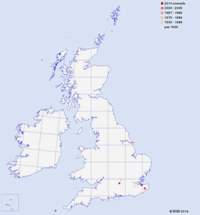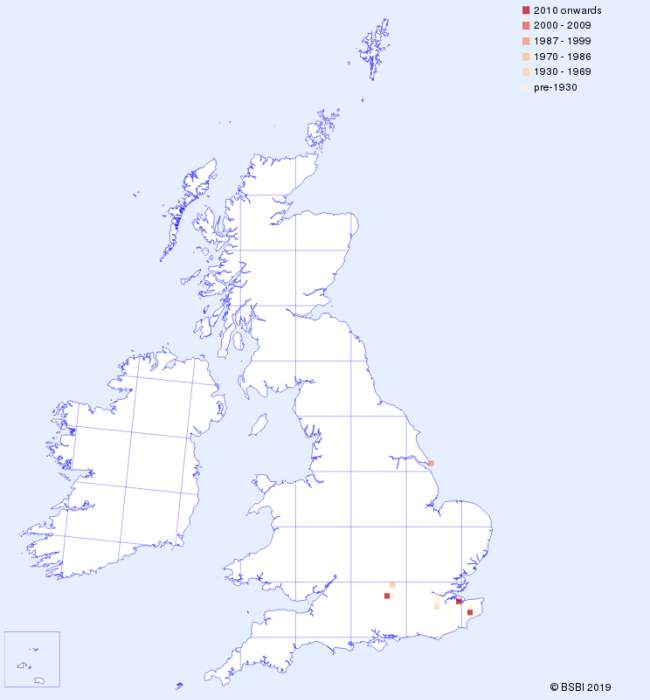The Monkey Orchid is extremely rare; its range in Britain is confined to three sites, one in Oxfordshire and two in Kent. It is classified as vulnerable under Schedule 8 of the Wildlife and Countryside Act. The common name derives from the flower's resemblance to a tiny Spider Monkey: the hood of the flower is the monkey's head and the slender, curly lobes of the lip resemble the arms and legs. Always localised, this orchid has suffered major decline due to the ploughing up of chalk downland and grazing by rabbits.The flowering time of Orchis simia in Britain is from mid May to early June. Once the flowers start to open, often from the top downwards, peak flowering is reached extremely fast and so timing a visit to see Monkey Orchids in Britain can be problematic. Flowering is adversely affected by the encroachment of scrub. Another factor is the amount of light available at its sites: if they become too shaded then the Monkey Orchid will not flower and may not appear above the ground at all. The Monkey Orchid is similar in appearance to the Military Orchid Orchis militaris, but the 'legs' of the Military Orchid are straight and the plants are much taller than those of the Monkey Orchid. In Europe the range of the Monkey Orchid extends from Holland in the north (where it is extremely rare) southwards to the Mediterranean region.
| Distribution Map | Key Features | |
 |
Records for the Monkey Orchid from BSBI are shown on the map with most recent in front. (Hover the mouse over the small map to expand it.) |
Plant: 10 to 30cm, occasionally to 45cm, stem flushed brownish towards the top and with 2 or 3 sheaths at the base. |
Image Gallery for Monkey Orchid Orchis simia
| Pollination | Taxonomy & Hybrids |
The Monkey Orchid is sometimes pollinated by flies and butterflies, but seed set is poor and most pollination is carried out by hand in Britain. Vegetative reproduction has been observed rarely in plants in Holland. |
The specific name simia means ape or monkey. |
Articles about Monkey Orchid in JHOS
